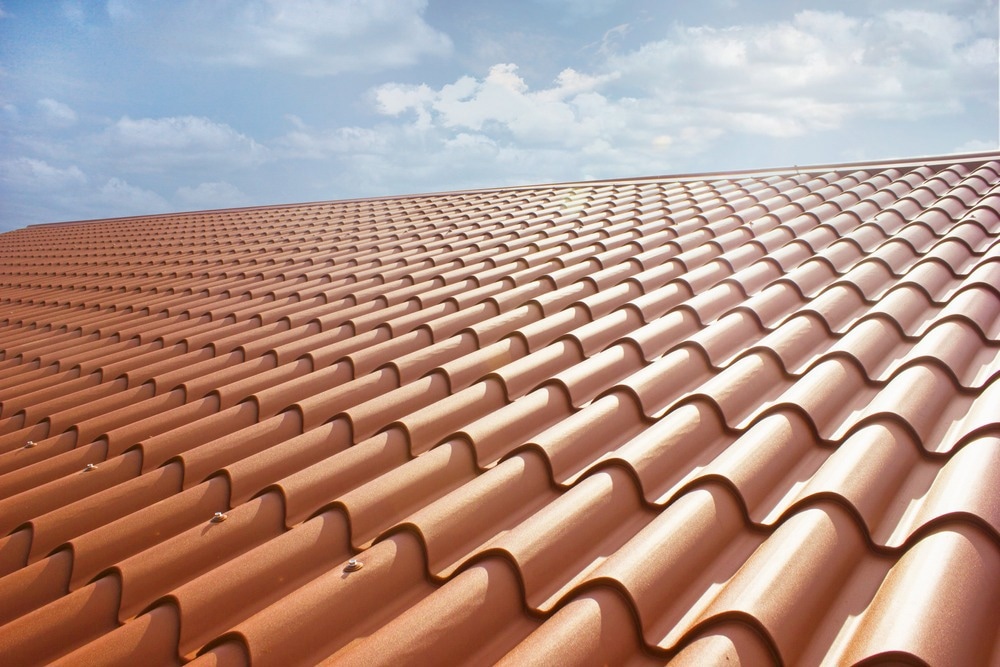Heating and cooling account for around half of the energy used in an average American building.

Image Credit: Luca Rani/Shutterstock.com
That represents a significant financial outlay, the burning of fossil fuels, and the strain that extreme weather puts on an aging energy system.
Additionally, researchers Charlie Xiao, Elliot Hawkes, and Bolin Liao of UC Santa Barbara are working to find solutions for this issue. The researchers describe an adaptable tile in an article published in the journal Device that, when used in roof-mounted arrays, can reduce summertime cooling costs and wintertime heating costs without the use of electronics.
It switches between a heating state and a cooling state, depending on the temperature of the tile. The target temperature is about 65° F- about 18° C.
Charlie Xiao, Study Lead Author, Department of Mechanical Engineering, University of California
This passive thermoregulating system, which is roughly four inches square, combines Hawkes’ work on mechanism design with Liao’s knowledge of thermal science to create a movable surface that can alter its thermal characteristics in response to a variety of temperatures.
The seeds of this project were planted during their frequent drives between Santa Barbara and northern California a few years back.
Both our spouses were in Stanford at the time, so we were taking trips and wondering what we could potentially do together.
Bolin Liao, Study Corresponding Author and Professor, Department of Mechanical Engineering, University of California
They then received seed funding from the California Nano Systems Institute on campus to design mechanically tunable thermal devices.
Xiao says, “The device is still a proof-of-concept, but we hope it will lead to new technologies that one day could have a positive impact on energy expenditure in buildings.”
The concept of adaptable roof tiles did not take on its final form until Xiao came up with the idea to use a wax motor. A wax motor converts thermal energy into mechanical energy by creating pressure that moves mechanical parts based on the way wax changes in volume in response to temperature changes. Wax motors are frequently used in a variety of appliances, including washing machines and dishwashers, as well as in more specialized settings, like the aerospace sector.
Regarding the tile, the wax motor has the ability to push or retract pistons that shut or open louvers on the tile’s surface, based on its condition. Therefore, in colder climates, the louvers are closed and lay flat when the wax is solid, revealing a surface that maximizes radiation absorption from sunlight and reduces heat dissipation.
However, the wax starts to melt and expand as soon as the temperature reaches about 18 °C, which causes the louvers to open and reveal a surface that radiates heat and reflects sunlight.
The wax also collects or releases a significant quantity of heat throughout the melting or freezing process, which helps to maintain the temperature of the building and the tile.
Xiao explains, “So we have a very predictable switching behavior that works within a very tight band.”
Testing has shown a reduction in energy consumption for heating by 2.6× and cooling by 3.1× when compared to non-switching devices covered with traditional reflective or absorbing coatings, the researchers report.
The gadget is operated without the need for electronics, batteries, or external power sources due to its wax motor, and in contrast to other comparable technologies, it exhibits responsiveness within a few degrees of its intended range. Its straightforward design also lends itself to customization; different thermal coatings and wax kinds can be employed to enable the device to function at desired temperature ranges while also facilitating mass production.
The device is still a proof-of-concept, but we hope it will lead to new technologies that one day could have a positive impact on energy expenditure in buildings.
Elliot W. Hawkes, Corresponding Author, Department of Mechanical Engineering, University of California
Journal Reference:
Xiao, C., et al. (2023). Passively adaptive radiative switch for thermoregulation in buildings. Device. doi.org/10.1016/j.device.2023.100186